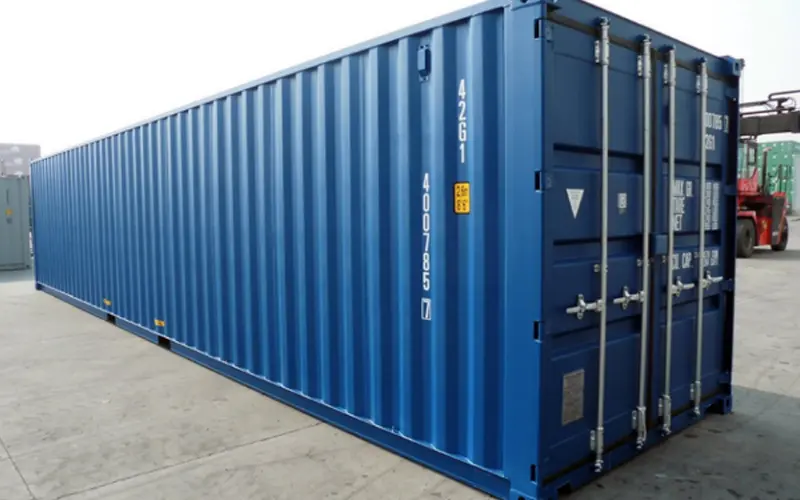Shipping frozen food can be a challenge, but with the right strategies, it ensures that your items arrive in perfect condition. This in-depth blog will guide you through the exploration of how to ship frozen food.
Understanding Shipping Frozen Foods
Shipping frozen foods requires careful planning to ensure the items remain safe and frozen during transit. Key considerations you should pay attention to include maintaining the right temperature, understanding shipping regulations, and choosing a suitable carrier, which will be elaborated below.
Key Challenges and Considerations
One of the primary challenges in shipping frozen foods is maintaining a constant low temperature. Improper temperature control can lead to defrosting and spoilage. If you are searching for methods of temperature control, look no further than refrigeration systems offered by Square Technology. Integrating cutting-edge devices like refrigerating compressors, pressure vessels, electrical elements and the like, refrigeration systems made by Square Technology can maintain the consistent low temperature of frozen food, establishing itself one of the best ways of maintaining a constant low temperature.

Frozen foods should also be wrapped in watertight plastic bags and insulated with materials like bubble wrap and insulated foam containers.
Dry ice is often used to keep items frozen, but it poses challenges due to its hazardous nature and regulations regarding its use. Most carriers like FedEx, UPS, and USPS have specific guidelines on the quantity of dry ice permissible per shipment.
Regulatory Compliance
Shipping frozen foods, especially with dry ice as a refrigerant, involves understanding and adhering to various rules and regulations. Dry ice is classified as a hazardous material because it sublimates into carbon dioxide gas, which can be dangerous in confined spaces.
Carriers like FedEx, UPS, and USPS have strict guidelines that must be followed. For example, the USPS limits the use of dry ice in air transportation to 5.5 pounds per package due to safety concerns. Additionally, international shipping can be complicated as regulations differ from country to country, and some regions may completely prohibit the dispatch of dry ice or frozen foods altogether. You must be careful not to violate these guidelines and regulations to mitigate any potential disputes.
Selecting the Right Carrier
Choosing the right carrier is crucial for successfully shipping frozen foods. Carriers like FedEx, UPS, and USPS offer specific services tailored for perishable items. For instance, FedEx and UPS provide detailed guidelines on packaging requirements and offer expedited services to minimize transit time.
Shipping costs vary significantly depending on factors such as the weight of the package, the amount of dry ice used, and the destination.
Each carrier also has customer support services to help you navigate their specific requirements and ensure you comply with all necessary guidelines for shipping dangerous goods.
Expedited shipping options can help minimize the risk of thawing, but make sure to balance the cost against the need for maintaining product integrity during transit.
Preparing Frozen Food for Shipment
Proper preparation is crucial for successful frozen food shipment, and you should focus on using the right materials and techniques to keep items secure and fresh.
Packing Materials and Insulation Techniques
Choosing the correct packing materials is vital. You should begin with placing items in watertight plastic bags and sealing them tightly to protect against leaks. For added protection, bubble wrap around the plastic bags may be a good option.
Use an insulated container such as a foam cooler with thick walls. Line the container with insulated pads or liners to keep the food at a stable temperature. Arrange frozen gel packs around the food to maintain the frozen state.

Place the insulated container inside a sturdy corrugated cardboard box, providing an additional layer of protection. Ensure all seams and flaps are securely taped with strong packing tape to prevent condensation damage and keep contents intact.
Labeling and Documentation
Appropriate labeling is essential for shipping frozen food. Clearly mark the package as perishable and indicate the presence of dry ice if used. The shipping label should be affixed prominently on the top of the box for visibility.
Include any special handling instructions to ensure the carrier knows how to manage the shipment properly. If shipping internationally, ensure all documentation complies with the destination country’s regulations to avoid delays or issues at customs.
Handling Perishable Items
Handling perishable items requires maintaining proper temperature and avoiding contamination. Pack food quickly after freezing to reduce exposure to warm conditions. Use additional gel packs if the destination is far or the weather is particularly hot.
If using a combination of dry ice and gel packs, you should make sure the dry ice does not directly contact the food to prevent freezer burn. Communicate with the receiver about the expected delivery time and any necessary steps they should take upon receiving the package, such as immediate refrigeration.

By following these steps meticulously, the risk of spoilage and damage can be minimized significantly, ensuring the frozen food arrives in prime condition.
Shipping and Delivery Considerations
Shipping frozen foods requires careful planning to maintain their low temperature throughout transit. Selecting suitable shipping options and ensuring proper packaging are essential to prevent spoilage.
Choosing Shipping Options
When shipping frozen foods, expedited shipping options such as overnight delivery are crucial. These options minimize transit time, reducing the risk of the food thawing. Ecommerce shipping companies often provide specialized services that cater to frozen and perishable items.
Refrigerated services are another reliable option. These services offer constant temperature control, commonly referred to as a cold chain, ensuring that the storage conditions remain optimal from start to finish.
For longer distances or international shipments, select a shipping provider experienced with frozen goods. Many providers have specific guidelines or restrictions regarding the amount of dry ice you can use.
It’s recommended to discuss the specific needs of your shipment with your chosen carrier to understand all the requirements and possible risks involved. This helps in avoiding potential issues, ensuring that the frozen foods arrive safely and intact.



